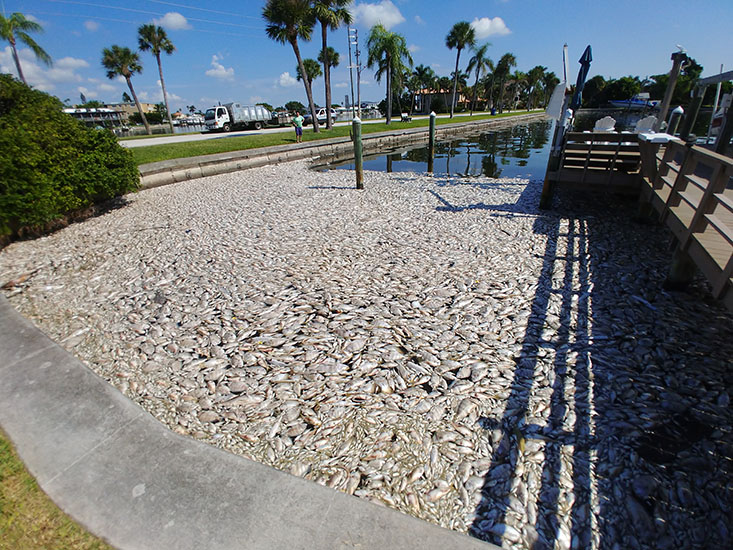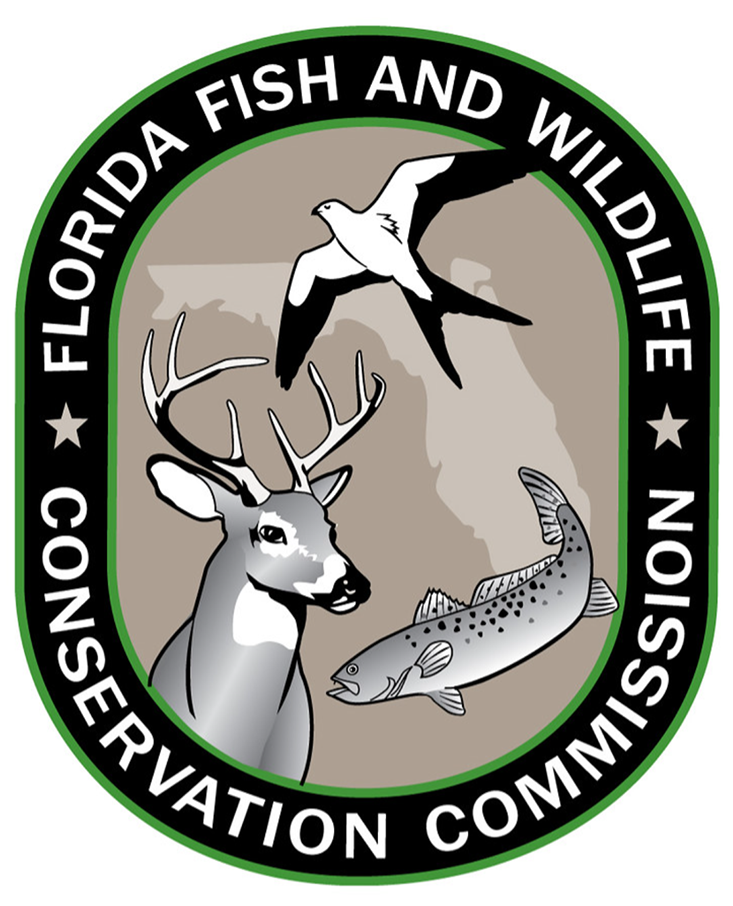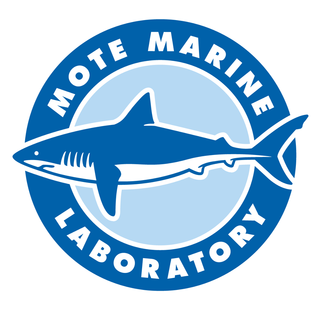Center for Red Tide Tracking and Forecasting
Overview
Harmful algal blooms of the toxic dinoflagellate, Karenia brevis, typically occur in late-summer or early-fall in coastal waters along the Gulf of Mexico. These blooms (often called “red tides”) can discolor waters red to brown and persist for months to years.
Toxins produced by K. brevis can kill fish, seabirds, and other marine animals and cause respiratory irritation in humans. Coastal communities often experience substantial economic losses as a result of these blooms.

Fish kill caused by red tide in Florida in 2018. Photograph by Meaghan Faletti.
In the Gulf of Mexico, a suite of observational and modeling approaches is necessary for advancing our knowledge of bloom dynamics.
USF's College of Marine Science has a long history working with our partners at the Florida Fish and Wildlife Conservation Commission and Mote Marine Laboratory utilizing these approaches to improve our understanding of red tides.
The scope and scale of recent bloom events, though, have highlighted critical gaps in our ability to detect, respond to, and forecast these blooms and their impacts.
The goal of this five-year, collaborative program (2020-2025) is to continue building on these partnerships to address these gaps and provide the State of Florida with improved observation and forecasting tools aimed at mitigating public health risks and economic losses associated with red tides.
This research is made possible with funding support from the Florida Fish and Wildlife Conservation Commission (FWC Agreement No. 20035) in partnership with Mote Marine Laboratory.


